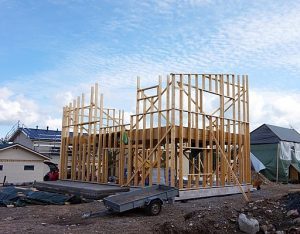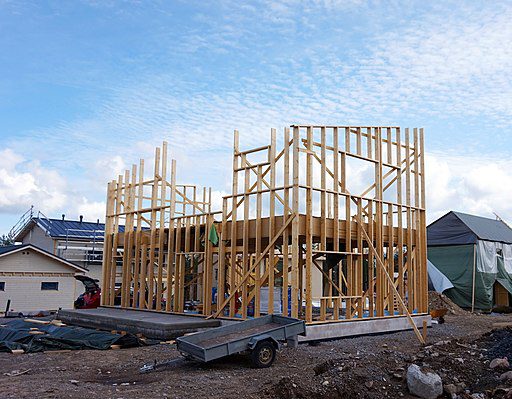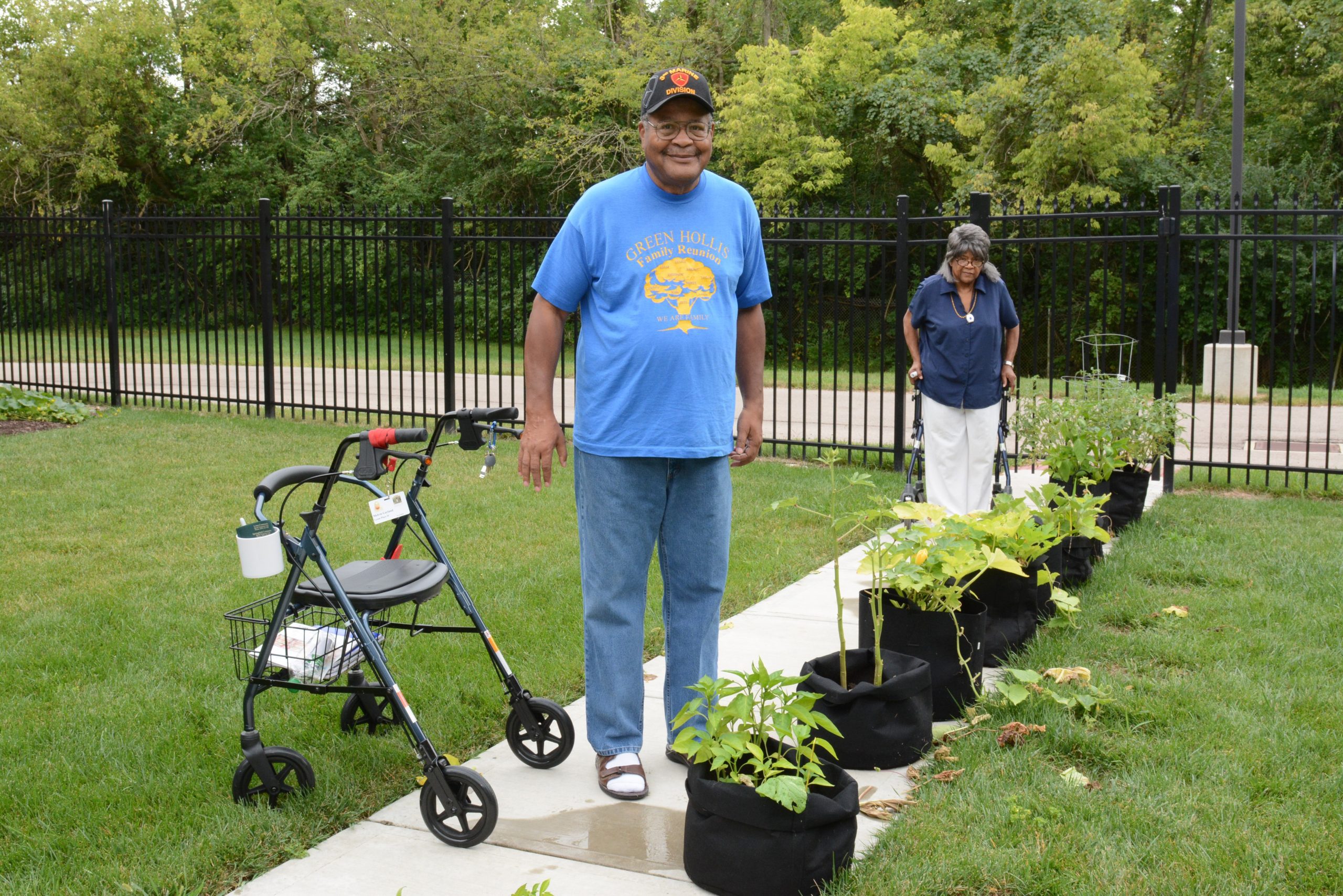
Based on current needs, the U.S. is short 7 million homes. We must produce more housing, especially affordable housing. Photo by Tiia Monto, CC BY-SA 4.0
America’s housing system was never just built to create housing. It was designed to maintain racially and economically segregated neighborhoods and it rests on a long legacy of inequity, specifically anti-Black racism. In this sense, our housing system isn’t really broken. Its weakness in this moment—in the pandemic—just shows that it’s working as designed. COVID-19 is holding up the mirror, and we have an unprecedented opportunity to begin the uncomfortable process of examining, owning, dismantling, and rebuilding the inequitable system that got us here.
Through decades of housing policies and practices that have literally divided us—such as redlining and the Federal Housing Administration’s 1938 Underwriting Manual, which allowed loan denial based on race—we’ve intentionally created entire communities that are more vulnerable to crisis than others. Black Americans are still the least likely group to own homes and build generational wealth, and therefore have fewer economic protections (the homeownership gap is actually wider today than it was in the 1960s when housing discrimination was overtly legal). People of color are still overrepresented in our homeless populations and our incarcerated populations, and those most impacted by the lack of affordable housing, jobs, and quality healthcare.
When you look at where and who this pandemic is hitting hardest, it’s clear that race, place, job type, and income matter. It’s hard not to see housing—and its long threadline through history—as inextricably linked to this moment.
Housing policy helped get us here, and now housing may be another collateral consequence of the pandemic and its economic fallout. While December’s COVID relief bill provides some relief for renters and short-term protection from eviction, it does little to address the long-standing inequalities that got us here. It’s a temporary bandage. We need to leverage these short-term legislative wins as a jumping-off point to transform our housing system as a whole.
This moment now demands far more than our best intentions—it demands a concerted effort to do things differently to meet communities’ real needs—from mom-and-pop landlords and small-business owners, to renters, to families facing eviction—in urban centers and rural communities alike. A new housing justice playbook provides some important recommendations for the federal government. Our ability to align the wide range of stakeholders necessary to move this agenda must start by galvanizing support around three basic propositions.
First, we have to protect those at risk of losing their homes—and extend both the eviction and foreclosure moratoriums beyond the new deadline. Our economic recovery after this pandemic will be a slow, uphill battle—which means that countless families will be at risk of losing their housing for years to come. Unless the federal government acts to extend both the federal moratorium on eviction and cash or mortgage assistance further, we could see mass homelessness and increased poverty—both of which could affect generations of Americans. Congress must produce a longer-term relief package that pulls families back from the brink. This is the first step and the absolute minimum.
Next, local lawmakers must act to permanently preserve housing for cost-burdened tenants and provide new pathways for ownership. Today, over 100 million Americans are experiencing extreme housing and economic insecurity. That means they live in households with incomes below 200 percent of the federal poverty level; households where families work long hours simply to cover rent and food, and where one health scare or missed paycheck means financial ruin. Lawmakers have a responsibility to everyone—and that means advancing solutions to preserve affordability with equity at the core.
Change starts with understanding. Policymakers can start by using PolicyLink’s National Equity Atlas to measure the state of equity in their jurisdictions, including levels of housing burden on different communities. They can also leverage data to help advance proven solutions, like creating an anti-displacement tax fund, as Milwaukee did. Or California, which implemented “just cause” ordinances to protect vulnerable tenants. Community Land Trusts —first created to protect Black farmers during the civil rights era—are also important models for creating housing access, stability, and community ownership.
Third, and critically, we need to produce more housing, especially affordable housing, where we are short 7 million homes based on current needs. We need all hands on deck to accomplish this: the public, private, and nonprofit sectors acting in alignment; community-based organizations and residents sitting at the decision-making table; businesses—small and large—working in concert.
The Partnership for the Bay’s Future, for example, is a $500 million public-private effort to preserve and produce 8,000 homes in the next five to ten years in the San Francisco Bay Area, and protect tenants in as many as 175,000 households in the next five years. These kinds of partnerships are crucial, because truly solving the housing crisis will require more than just tax funds or city ordinances. We need to reimagine, together, what our housing system should do and create systems that allow us to fully incorporate our values of equity and inclusion. And we need to flip the narrative. Housing isn’t a sidecar issue—it is the most fundamental necessity we have as humans and it is a core American value.
If, in the wake of the pandemic, we can get housing right we can build a world where opportunity is actually available for all. Where workers can show up as their best selves, ready to contribute their full entrepreneurial spirit. Where families of all backgrounds can put their kids to bed at night and dream about a better future. Where communities can thrive with safe streets and supportive neighborhoods. Where housing is a foundation for widespread, shared success. It will be a world unlike the one we’re in now. If we lean in to create the housing system we need, that world is possible.





Yes, and…. When we view the affordability crisis through the lens of Climate-Change, then we see that “housing is a human right, NOT a commodity.” The need for healthy, affordable, accessible housing reaches beyond those who are “rent burdened.” We should reject the consumptive materialism of the past that views housing as “an investment to build wealth,” and replace it with an ethic of stability, neighborliness, and democratic decision-making. “Ownership” of this basic human need could be realized through social housing, limited equity coops, and community land trusts. We might demonstrate the different type of society that Climate-Change mandates by setting up social housing for American Descendants of Slavery, as one form of reparations.
Yes…to build on both views, we could help address these related crisis by restoring ecosystem services through equitable housing. Homes and yards that contribute to the life support systems upon which we all depend could realize the new models mentioned (social housing, limited equity coops, and community land trusts) while inviting broadest collaboration and decision-making. Thanks for dialogue.